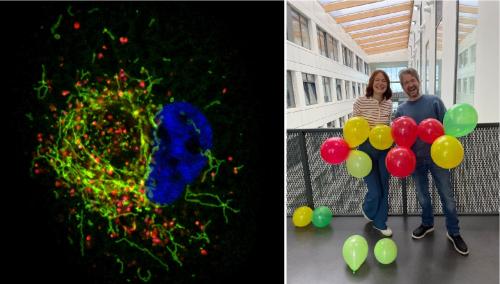
Mitochondria and peroxisomes are key eukaryotic metabolic organelles. They perform essential and related roles including fatty acid metabolism and ROS (Reactive Oxygen Species) scavenging. Their dysfunction has been linked to several devastating disorders including those relating to neurodegeneration and cancer and timely removal of damaged/dysfunctional mitochondria or peroxisomes is thought to be critical in preventing disease. Autophagy, a lysosomal degradation pathway, is a significant pathway mediating turnover of intracellular components and it can specifically target mitochondria (termed mitophagy) and peroxisomes (termed pexophagy). Compared to mitophagy, much less is known about pexophagy and in this new study the authors explored mechanisms regulating pexophagy and determined if turnover of these two related organelles is coordinated. Using innovative intracellular fluorescent mitophagy and pexophagy reporters, Lea Wilhelm (first author and Ganley Lab postdoctoral fellow) found that hypoxia-related signalling not only stimulated mitophagy but also pexophagy – indeed suggesting an autophagic relationship. Surprisingly, Lea found that the protein NIX/BNIP3L, previously described as an outer mitochondrial membrane-anchored mitophagy receptor, also independently localised to peroxisomes to drive pexophagy. Thanks to international collaboration with the Patricia Boya group (Madrid, Spain and Fribourg, Switzerland), the authors showed that this process happens physiologically, with mouse tissue lacking NIX having a higher peroxisomal content. Further support from the Ashley Toye group (Bristol, UK), also demonstrated that pexophagy is stimulated under the same physiological conditions that activate mitophagy during human red blood cell development. Taken together, this work uncovers a dual role for NIX, not only in mitophagy but also in pexophagy, thus illustrating the interconnection between selective autophagy pathways under physiological conditions. These results also have therapeutic implications, suggesting NIX as a target to manipulate pexophagy and that disease pathology attributed to impaired mitochondrial turnover may also be influenced by dysfunctional pexophagy.
These finding have just been published in The EMBO Journal and can be accessed here.

